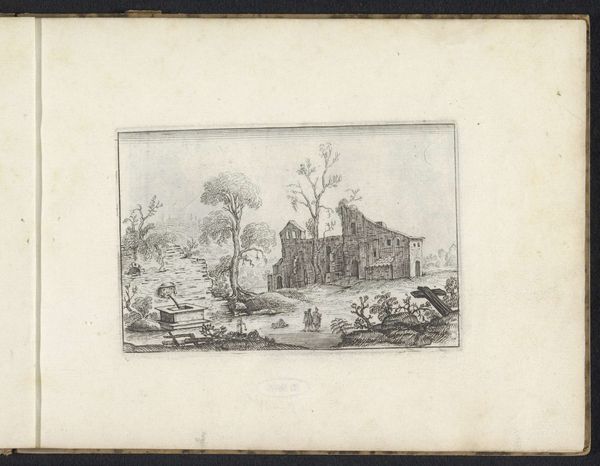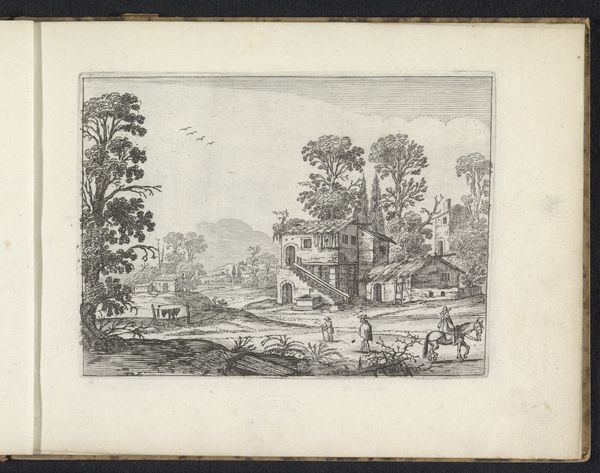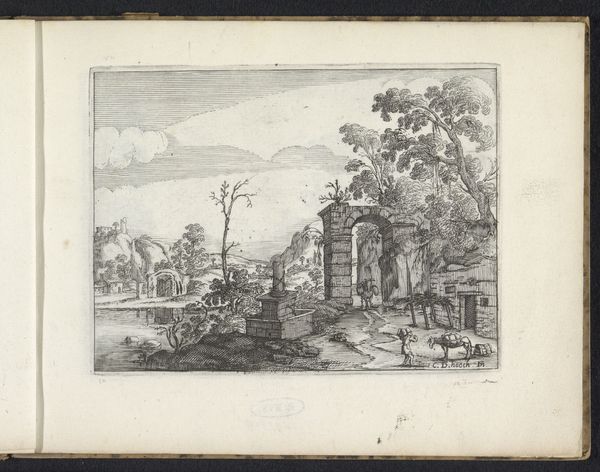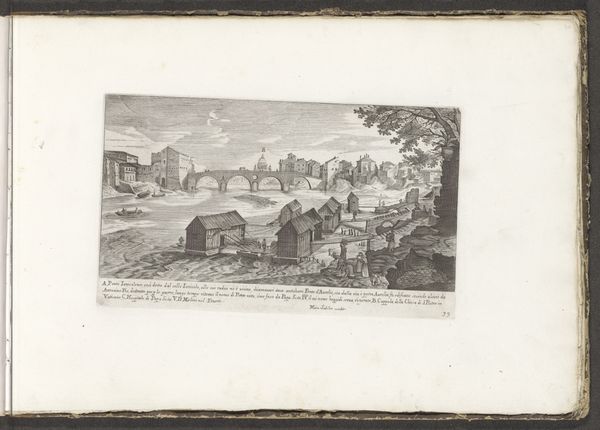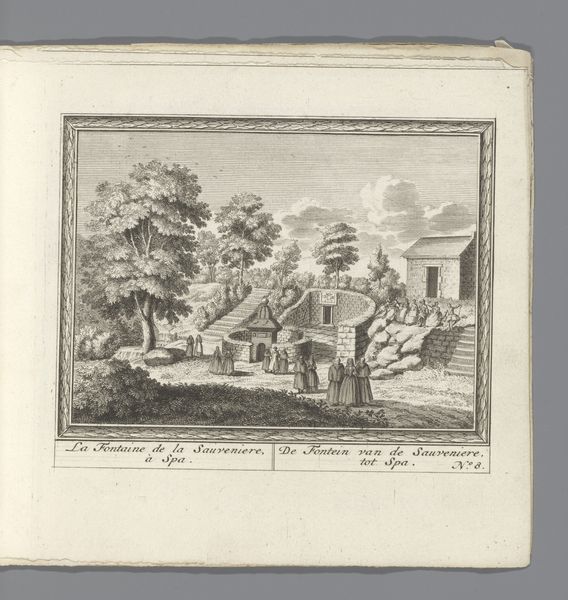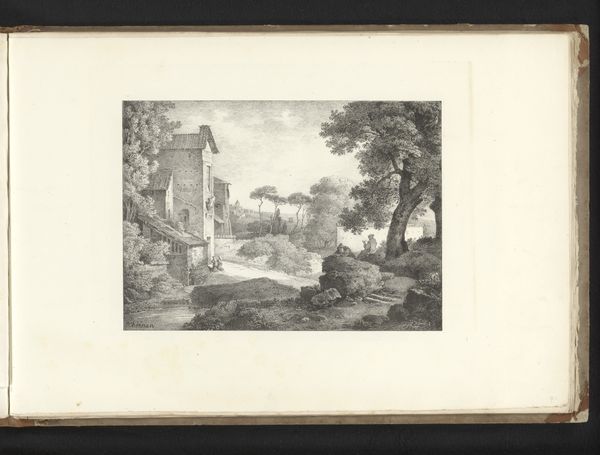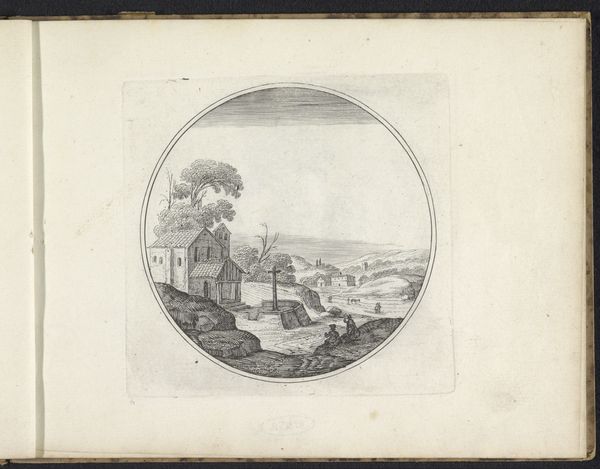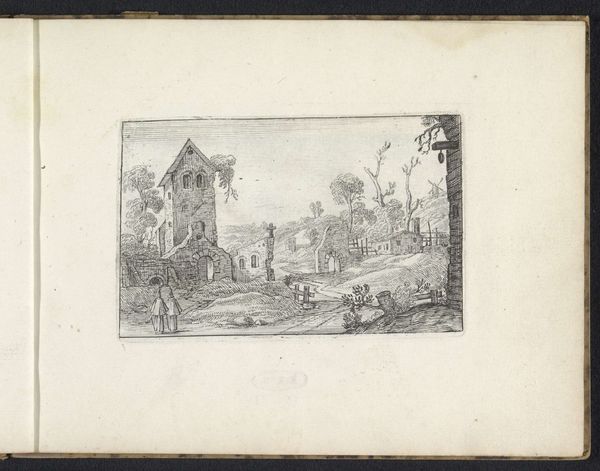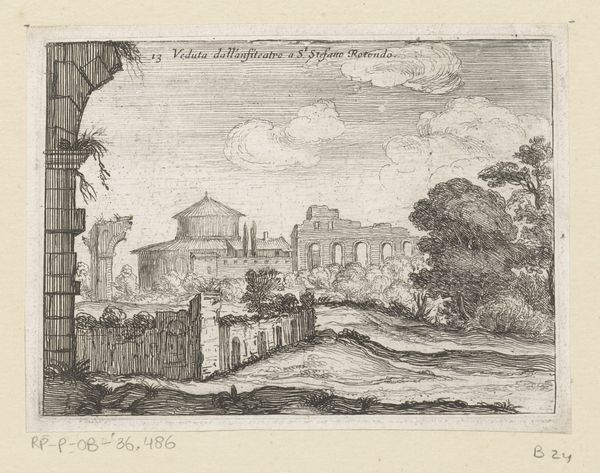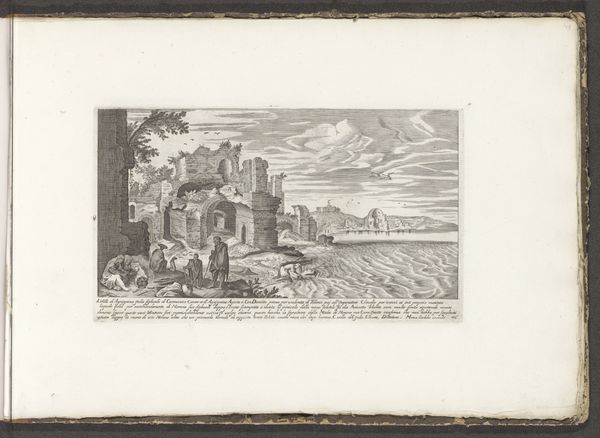
drawing, print, etching, ink
#
drawing
#
narrative-art
#
baroque
#
ink painting
# print
#
etching
#
landscape
#
ink
#
geometric
#
cityscape
Dimensions: height 104 mm, width 139 mm
Copyright: Rijks Museum: Open Domain
Curator: This etching by Charles de Hooch, titled "Landscape with the Ruins of Two Buildings," likely created sometime between 1610 and 1638, offers a glimpse into a world in decay. What catches your eye initially? Editor: The starkness. It's predominantly monochromatic, save for subtle tonal shifts. The artist uses lines to define shapes and forms, and the geometry feels very… deliberate. Despite the theme of decay, it feels controlled, structured. Curator: Controlled, yes, but controlled ruin. It’s a scene steeped in the melancholy of time's passage. The ruins evoke a sense of history lost, civilizations faded, a memento mori in architectural form. The figures are small, dwarfed by the architecture; it’s a comment on humanity’s fleeting existence against the backdrop of enduring ruins. Editor: Agreed, there’s a certain bleakness but the contrast in textures draws my eye, between the rough stones of the crumbling structures and the finer lines defining the distant cityscape, gives the scene considerable depth. And observe the composition; the buildings are cleverly positioned to create leading lines, drawing our eye through the image and back again, which contributes to a sense of cyclical time. Curator: And that cycle reminds us that every constructed thing carries with it the seed of its own destruction. The ruins act as potent symbols of that cyclical pattern of rise and fall, reflecting a common Baroque sensibility— the consciousness of earthly transience. It provokes thoughts about societal collapse and the legacy of human endeavor, the ambition, inevitably succumbing to dust. Editor: Do you believe there is any idealizing happening in how the architectural forms are depicted? Is de Hooch glorifying or romanticizing the state of ruin in some way? Curator: Perhaps romanticizing is too strong, but certainly drawing out the sublimity inherent to ruins. Their starkness invites both dread and contemplation. The landscape is beautiful, but infused with an awareness of time. The tiny figures become not simply details of local flavor, but vehicles through which we project and navigate the uncanny, humbling effect the crumbling monuments seem intended to have. Editor: Yes, "uncanny" is indeed fitting. Thanks to those geometric ruins juxtaposed within an ostensibly bucolic countryside. The artist’s meticulous craft makes it all resonate even more strongly. Curator: And what do you think ultimately lingers with us, having looked closely at the geometry and the atmosphere created through line and shading? Editor: A disquieting beauty. The composition compels even as the imagery unsettles. It invites the eye and challenges the mind. Curator: For me, a reminder that what endures is not always what's intact, but what time has marked with its relentless touch, carrying echoes through ages.
Comments
No comments
Be the first to comment and join the conversation on the ultimate creative platform.
